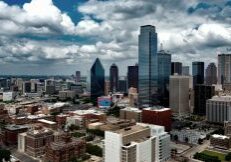Ordinary Time: Space for Spiritual Growth
AMIA Communications
 It’s not mentioned in Scripture. Its name is absent from the Book of Common Prayer. But the purpose of Ordinary Time is woven throughout both. And, though this time is labeled “ordinary,” it’s far from unimportant.
It’s not mentioned in Scripture. Its name is absent from the Book of Common Prayer. But the purpose of Ordinary Time is woven throughout both. And, though this time is labeled “ordinary,” it’s far from unimportant.
Ordinary Time is comprised of two periods in the liturgical year that stretch between the Christmas and Easter cycles. The first generally spans from Epiphany until the day before Ash Wednesday, and the second begins after Pentecost and lasts until the beginning of Advent.
Unlike the seasons it ties together, Ordinary time isn’t focused on preparation or celebration but rather on everyday growth. It provides time and space to slow down, rest and build habits that foster spiritual maturity. The Church of England says, “So-called ‘ordinary time’ is hardly boring. It allows for more continuous reading from the Bible, for the exploration of other themes such as creation and the environment, and for creative responses to saints’ days.”
A Season for Application
This season provides balance to the liturgical calendar. Anglican Compass explains, “The Church Year flows into preparation phases that make celebration so much more celebratory. It slows down and rests during ‘ordinary time,’ creating an ebb and flow of special and ordinary time which makes special times even more so.”
Ordinary Time also gives space for us to live out what we celebrate in seasons like Christmas and Easter. During the in-between times, we apply the realities of God’s presence with us and of the resurrection to our day-to-day rhythms, discovering what it means to rest, work and be as followers of Christ. These are days of formation, of slow cumulative growth that shapes us as resurrection people.
Growth as a Body
Scott+ Davis, who founded AMiA church Grace Anglican Church, explains that Ordinary Time “is about slow, steady growth, much like a farmer’s crop that slowly develops from seed into harvest. … Ordinary Time, too, is that slow, maturing growth time when Jesus shows us our hearts and within them, the wheat and tares that grow therein. … This liturgical season is created so that we might discern the times and the seasons, reminding us that growth in Jesus cannot be rushed.”
This is reflected in the liturgical color for Ordinary Time: green, which symbolizes new life, growth, hope and anticipation. Its presence over the months of this season provides an ongoing reminder that our walk with God is not a sprint, and that we, like the green things we see in nature, require time and nurturing to grow.
This growth takes place not only in us as individuals but in us as the Church. During Ordinary Time, members of the Body of Christ have time to, together, mature in Christ. In this season, each believer uses his or her gifts “to equip the saints for the work of ministry, for building up the body of Christ, until we all attain to the unity of the faith and of the knowledge of the Son of God, to mature manhood, to the measure of the stature of the fullness of Christ.” (Ephesians 4:12-13 ESV)
This maturity comes, in large part, from the day-to-day, nuts-and-bolts aspects of living out our faith in community. Its slow, continual pursuit is at the heart of Ordinary Time. As Paul continued in his letter to the Ephesians, “We are to grow up in every way into him who is the head, into Christ, from whom the whole body, joined and held together by every joint with which it is equipped, when each part is working properly, makes the body grow so that it builds itself up in love.” (Ephesians 1:15b-16 ESV)
Though growth is pursued through everyday moments and interactions, the result is anything but mundane. As we “grow up in every way” into Christ, we experience the beautiful fruit of Ordinary Time.











